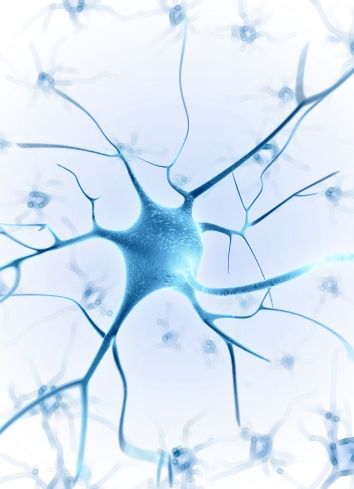LSD1
Lysine specific demethylase 1 (LSD1, also known as KDM1A), is a histone modifying enzyme recruited by transcription factors to specific regions in the genome. LSD1 forms part of complexes that regulate the expression of genes involved in the onset and progression of diseases such as cancer, CNS disorders, viral infections, and others.
LSD1 primarily removes methyl groups from mono and dimethylated lysine 4 in the histone H3 tail, thus acting as an “eraser”. LSD1 also acts as a scaffolding protein for other components of the multiprotein complexes needed to control transcription.
Aberrant expression of LSD1 has been demonstrated in many types of cancers. Among others, LSD1 expression is upregulated in bladder, small cell lung and colorectal cancer, when compared with the corresponding healthy tissues. LSD1 has also been shown to be over-expressed in some breast cancers and may function as a biomarker of the aggressiveness of the disease.
One of the cancers in which the function of LSD1 is better understood is in acute leukemia. Particularly, in a subset of acute myeloid leukemia (AML), LSD1 is crucial for the function and maintenance of the leukemic stem cells, a subset of malignant cells that is believed to be the ultimate reason for relapse in those patients. LSD1 inhibition might be a therapeutic solution to prevent those relapses.
Small cell lung cancer (SCLC) is a very aggressive tumor with very limited therapeutic options. A subtype of SCLC, characterized by expression of neuro-endocrine genes, has been found to be particularly sensitive to LSD1 inhibition. Oryzon’s clinical stage LSD1 inhibitor iadademstat induces expression of the tumor suppressor Notch-1 in SCLC, and switches off an oncogene described as the main cause for tumor progression in this type of cancer. Experiments in animals with very aggressive tumor cells obtained from relapsing SCLC patients have provided very encouraging results regarding the potential of iadademstat as a therapeutic alternative in these tumors.

Oryzon’s clinical stage LSD1 inhibitor iadademstat induces expression of the tumor suppressor Notch-1 in SCLC, and switches off an oncogene described as the main cause for tumor progression in this type of cancer.
LSD1 is expressed in many tissues of the human body, from the embryonic process to adult life. One of the tissues where LSD1 plays a more important role is the brain. It intervenes in the first stages of life helping the neuronal division in order to ensure that all neurons that will be needed later in adult life are produced. After birth, multiplication is substantially reduced and neurons differentiate, travel to their target sites and establish the myriad of connections that will ensure the correct functionality of the various brain areas. LSD1 plays an important role in this process. In several neurological and psychiatric diseases, deregulation of the activity of LSD1 can occur.
In several animal models of Alzheimer’s and Huntington’s disease, and of schizophrenia and psychosis, LSD1 inhibition results in an improvement of learning or memory. Oryzon's clinical stage LSD1 inhibitor vafidemstat reduces pathologically aggressive behavior and increases sociability in animal models. LSD1 inhibition also produces axonal and synaptic branching of prefrontal cortex neurons, and improves the ability of neurons to connect with neighboring neurons.
SETD1A is a histone methyl transferase that catalyzes methylation of histone 3 lysine 4, a “writer” with the opposite enzymatic activity of LSD1. Loss of function mutations in the SETD1a/Compass complex have been associated with schizophrenia and neurodevelopmental disorders. In SETD1A +/- mice, inhibition of LSD1 restores transcriptional imbalances and results in the restoration of normality at neuronal, anatomical and functional level.
In animal models, the effect of mutations in genes or inhibition of signaling pathways associated with autism spectrum disorders or other neurodevelopmental diseases can be restored by LSD1 inhibition. Patients with mutations in genes from these pathways are therefore candidates for personalized medicine approach and treatment with vafidemstat, our LSD1 inhibitor in clinical development for CNS diseases.
Finally, LSD1 is involved in inflammatory processes, and our LSD1 inhibitors have been shown to reduce inflammation and clinical signs in preclinical models of multiple sclerosis. Inflammation is a pathophysiological process that has been shown to play a role in CNS diseases such as multiple sclerosis or Alzheimer's disease as well as in psychiatric diseases.

LSD1 inhibition reduces pathologically aggressive behavior and increases sociability in animal models. LSD1 inhibition also produces axonal and synaptic branching of prefrontal cortex neurons, and improves the ability of neurons to connect with neighboring neurons.
Below you can find a selection of recent relevant scientific publications on LSD1 and its role in human disease published by independent researchers.
Mukai J, et al. Neuron. 2019 Oct 1. pii: S0896-6273(19)30787-1. doi: 10.1016/j.neuron.2019.09.014. [Epub ahead of print]
Augert A, et al. Sci. Signal 2019 Feb 5; 12 (567) pii:eaau2922. doi: 10.1126/scisignal.aau2922. PMID: 30723171
Sheng W, et al. Cell. 2018 Jul 26;174(3):549-563.e19. doi: 10.1016/j.cell.2018.05.052. Epub 2018 Jun 21. PMID: 29937226
Shao G, et al. Oncol Lett. 2018 Jun;15(6):9025-9032. doi: 10.3892/ol.2018.8511. Epub 2018 Apr 17. PMID:29928330
Bose P, Konopleva MY. Cancer Cell. 2018 Mar 12;33(3):342-343. doi: 10.1016/j.ccell.2018.02.014. PMID:
Hosseini A, Minucci S. Epigenomics. 2017 Aug;9(8):1123-1142. doi: 10.2217/epi-2017-0022. Epub 2017 Jul 12. Review. PMID:28699367
Maiques-Diaz A, Somervaille TC. Epigenomics. 2016Aug;8(8):1103-16. doi: 10.2217/epi-2016-0009. Epub 2016 Aug 1. Review. PMID:27479862